Invented by Thomas Peter DeFelice, Duncan Axisa, Individual
Intelligent systems for weather modification programs refer to advanced technologies and tools that can manipulate weather patterns to achieve desired outcomes. These systems utilize artificial intelligence, machine learning, and big data analytics to analyze weather data, predict patterns, and make informed decisions to modify weather conditions.
One of the key drivers of the market for intelligent systems for weather modification programs is the growing awareness of climate change and its consequences. As global temperatures rise and extreme weather events become more frequent, governments and organizations are investing in technologies that can help them adapt to and mitigate these changes.
Intelligent systems for weather modification programs offer a range of benefits. They can help prevent or reduce the impact of natural disasters by altering weather patterns. For example, cloud seeding is a technique used to enhance precipitation by dispersing substances into the air that serve as cloud condensation or ice nuclei. This can help alleviate drought conditions or prevent the formation of hail during storms.
Furthermore, intelligent systems can also be used to manage weather conditions for specific industries. For instance, agriculture heavily relies on favorable weather conditions for crop growth. By using intelligent systems, farmers can optimize irrigation schedules, predict rainfall patterns, and protect crops from extreme weather events.
The market for intelligent systems for weather modification programs is not limited to government agencies and organizations. Private companies are also investing in these technologies to protect their assets and operations. For example, insurance companies can use weather modification programs to reduce the risk of property damage caused by extreme weather events. Similarly, energy companies can optimize their operations by predicting wind patterns for wind farms or managing water resources for hydropower plants.
However, the market for intelligent systems for weather modification programs also faces challenges. Ethical considerations, environmental impact, and regulatory frameworks are important factors that need to be addressed. Critics argue that manipulating weather patterns can have unintended consequences and disrupt natural ecosystems. Therefore, it is crucial to strike a balance between the benefits of weather modification and its potential risks.
In conclusion, the market for intelligent systems for weather modification programs is experiencing significant growth as the need for climate control and weather manipulation becomes more urgent. These technologies offer a range of benefits, from mitigating the impact of natural disasters to optimizing operations in various industries. However, ethical and environmental considerations must be taken into account to ensure responsible and sustainable use of these technologies.
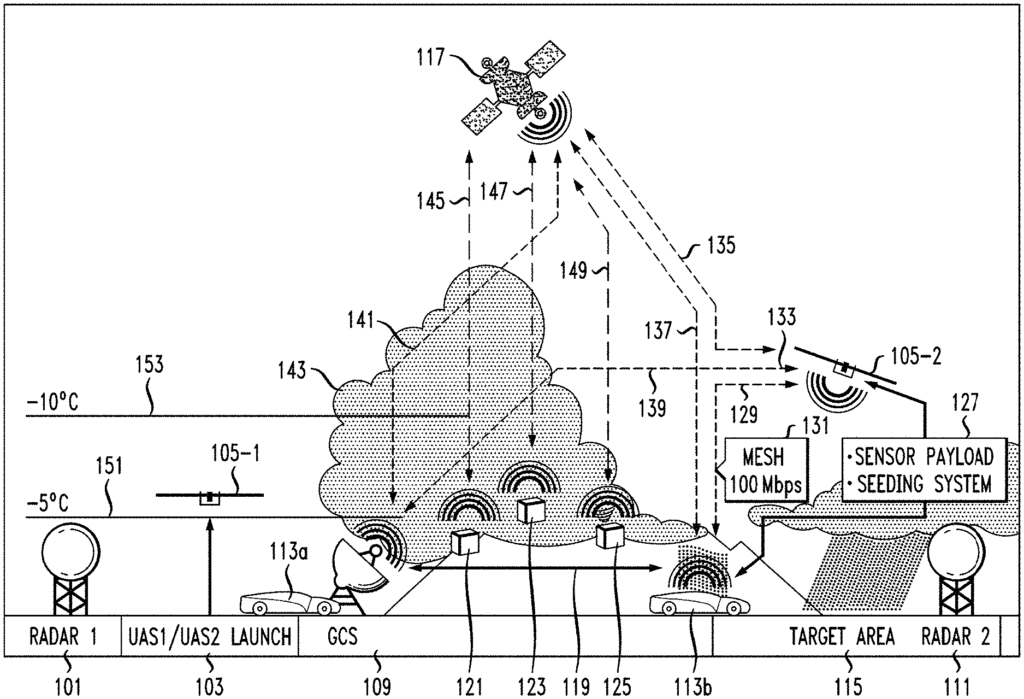
The Individual invention works as follows
Data, including the current locations of candidate cloud to be seeded, is obtained. Based on said data, a vehicle will be moved to a location near at least one candidate cloud to be seeded. The vehicle’s sensor suite is used to obtain weather and cloud data. The sensor suite of the vehicle is used to obtain parameters for the position of the vehicle. A machine-learning process is used to determine, based on weather and cloud data, the vehicle position parameters and which candidate clouds are suitable for seeding. It also determines where the seeding material should be dispersed within the selected candidate clouds. The vehicle is controlled so that it seeds the clouds according to the determined step.
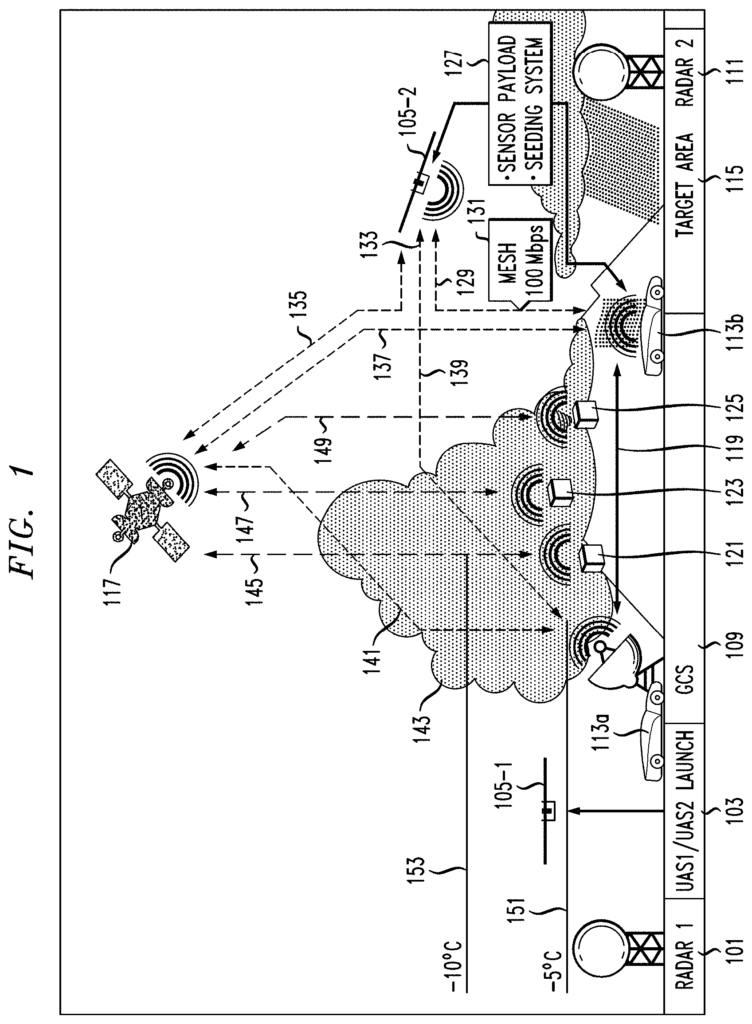
Background for Intelligent systems for weather modification programs
Unmanned aerial vehicles (also known as UAVs) and manned or unmanned aircraft are included in the invention. Artificial intelligence, machine learning and similar technologies are also included in the invention.
Weather modification is the intentional manipulation or alteration of the weather. The most common type of weather modification involves cloud seeding in order to increase snow or rain. Cloud seeding is the process of dispersing substances in the air to serve as cloud condensation, ice nuclei or other cloud-forming elements. Cloud seeding is possible by using ground generators, flare trees on the ground, planes or rockets.
Unmanned aircraft vehicles or UAVs, also known as “drones”, are unmanned aircraft vehicles. An aircraft without a pilot is called a drone. UAVs form part of unmanned aircraft systems (UAS). These systems include a UAV and ground-based controller as well as a communication system between them. UAVs can be controlled remotely by an operator, or by computers onboard.
Artificial intelligence or machine intelligence is intelligence displayed by machines in contrast to natural intelligence (NI), which is shown by humans and animals. Machine learning is an area of computer science which allows computer systems to improve their performance over time by using data without having to be explicitly programmed.
Aspects” of the invention provide intelligent weather modification systems. A method according to one aspect includes: obtaining data, including the locations of candidate cloud to be sown; moving a vehicle proximate to at least one candidate cloud to be sown based on this data; obtaining weather and clouds system data from a sensor set associated with the car, while both the vehicle and the sensor set are near the at least candidate cloud to be sown; and obtaining the vehicle position parameters using the sensor suite. The method also includes, using the weather and cloud data and vehicle position parameters, determining via a machine-learning process which candidate clouds should seeded and where within the seeded candidate clouds to distribute the appropriate seeding material. The method also includes controlling the vehicle in order to seed the candidate clouds according to the determining step.
In another aspect, an exemplary method comprises obtaining weather and cloud data from a ground based sensor suite comprising a plurality sensors associated with a seeding suite comprising a plurality seeding devices; based on this data, determining via a machine-learning process which individual ground based seeding devices to activate and when; sending control signals to each individual ground based seeding device to cause them to emit seeding materials in accordance with said determining step.
As used herein, ?facilitating? An action can be defined as performing an action, making it easier to perform the action, assisting in the execution of the action, or causing it to be performed. By way of illustration, and without limitation, instructions running on one processor could facilitate an action performed by instructions running on another processor by sending data or commands that cause or assist the action to be carried out. To avoid any doubt, even if an actor performs the action but facilitates it, that action is still performed by another entity or combination.
One or more embodiments or elements of the invention can be implemented as a computer-readable storage medium having computer-usable program code to perform the method steps specified. One or more embodiments or elements of the invention can also be implemented as a system or apparatus including a memory and at least one computer coupled to the memory to perform exemplary methods steps. In another aspect, one of more embodiments or elements of the invention can be implemented as means for performing one or multiple of the described method steps. The means can include hardware module(s), software module(s) that are stored on a computer-readable storage medium or multiple media and executed by a hardware processor or (iii), a combination (iii). Any of (i), (iii), and (iii), implement the specific techniques set out herein.
The skilled artisan will appreciate that the techniques of the present invention provide significant benefits in terms of technology. As compared to previous techniques, one or more embodiments base their cloud seeding decisions upon more relevant data about clouds and the environment. This allows for more accurate placement of seeding material and better cloud seeding outcomes. See also FIG. Refer to FIG.
The following detailed description, in conjunction with the accompanying illustrations, will reveal these and other features and benefits of the invention.
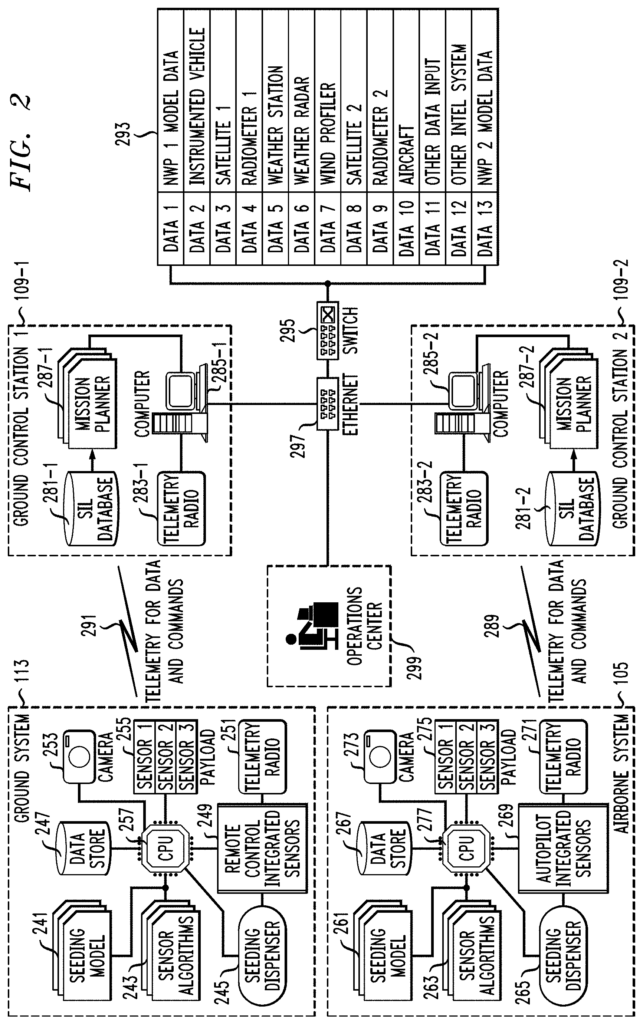
Aspects of the invention offer techniques for cloud seeding and/or weather modification activities and/or programs. At least some embodiments provide an advanced engineering-science-based method adapted to enhance the safety of, plus, lower the footprint and cost of, contemporary weather modification (advertent and inadvertent), and/or cloud seeding operational and research programs or activities, while optimizing their effectiveness (compared to contemporary cloud seeding programs).
At the very least, some embodiments use information from sensors on-system to guide seeding actions, i.e. employ adaptive control. In fact, some embodiments are centered around ‘Intelligent’ control. As disclosed in this document, systems with adaptive control and functional abilities are used for weather modification programs and cloud seeding activities that are configured according to a specific program requirement. In at least some embodiments, a ground-based “Intelligent” system is used. System for seeding fog or airborne ?Intelligent? “System for seeding stratiform low-base clouds, stratiform elevated clouds and convective cloud.
It is important to note that some embodiments enhance existing techniques or systems. One current project that includes sensors or components that may be relevant for unmanned systems is the SBIR/STTR Phase II award from Innovative Dynamics, Inc., funded by the Navy, and entitled “Atmospheric Icing Condition Measurement System” (AIMS). The IceSight Ice Protection System Airborne Icing Measurement System is available from Innovative Dynamics Inc. in Ithaca, N.Y. The Cloud Water Inertial Probe sensor (CWIP), from Rain Dynamics, provides in-situ weather information for manned or unmanned aircraft. Rain Dynamics LLC, Boulder, Colo. USA, offers the Cloud Water Inertial Probe (CWIP) as well as the CWIP fin. Droplet Measurement Technologies, Longmont, Colo. USA, offers other useful devices. For example, the Cloud Droplet Probe can be used on large or mid-sized UAVs. Sara Lance, Coincidence errors in a Cloud Droplet probe (CDP) and a Cloud and Aerosol Spectrometer, and the Improved performance of a Modified CDP, JOURNAL FOR ATMOSPHERIC & OCEANIC TECHNOLOGY volume 29, pages 1532-1541 (hereinafter referred to as “Lance 2012”). The entire text of Lance 2012 is hereby incorporated herein by reference in its entirety, even though the skilled artisan would be familiar with it. Droplet Measurement Technologies’ back-scatter clouds probe with polarization detector (BCPD) has the potential to detect icing with UAVs. K. Beswick and colleagues, The backscatter-cloud probe?a low-profile, autonomous optical spectrometer. Atmos, are cited. Meas. Tech. 7, 1443-1457, 2015 (hereinafter ?Beswick et al. 2014? 2014? Stratton Park Engineering Company, Boulder, Colo. (USA), is miniaturizing their cloud particle imagers (CPIs) and other cloud spectrometers to be used on UAVs. R. Paul Lawson et. al., “An overview of microphysical characteristics of Arctic clouds observed during FIRE ACE in May and July of 1998” J. Geophys. Res. 106 (D14), 14989-15014, Jul. 27, 20101, (hereinafter ?Lawson et al. 2001? 2001? The skilled artisan can use the elements and/or components described herein and similar to obtain at the very least a portion atmospheric and/or environment information that is used by one or more embodiments.
Some systems combine satellite-retrieved data with information from models and ground-based sensors. Meteorologists determine where to seed based on nearby data, what conditions will produce precipitation in the target area and when to turn on/off generators. The ground-based icing sensor, satellite data, and satellite retrieved information in current systems are not representative of where the information needed is to determine when to start or stop seeding, or evaluate seeding actions. Some embodiments measure the information from a location that is more accurate and relevant and then use it to initiate seeding. This information is used by at least some embodiments to ensure maximum effectiveness and efficiency near real-time, automatically.
One or more embodiments provides a method to improve performance and evaluation of programs or activities involving weather modification, cloud seeding or adaptive autonomous control using airborne and ground-based seeding systems and to prudently participate in the solutions to mitigate accidental weather modification.
Weather modification projects or cloud seeding are usually implemented on cloud systems, or portions of cloud that are inefficient in converting moisture to precipitation. The project is targeted at falling in a specific area. Cloud seeding is designed to make clouds more effective precipitators, regardless of the reason behind their inefficiency. Cloud seeding is a technology that has developed to be effective on cloud systems with the right conditions. Cloud seeding technology can be used to improve the efficiency of the water cycle. See, e.g. : DeFelice, T. P. (Ed. American National Standards Institute (Ed. (Ed. ASCE Standard Practices for the Design and Operations of Hail Suppression projects (39-15), ASCE Reston, Va. (USA) (hereinafter, ANSI/ASCE/EWRI, 2015); DeFelice T. P. (Ed. ASCE Standard Practices for the Design and Operations of Precipitation Improvement Projects (42-17), ASCE/EWRI Reston, Va. (hereinafter, ANSI/ASCE/EWRI 2017, DeFelice, T. P. and others, Extra Area Effects of Cloud Seeding?An Updated Assessment, Atmos. Res. 135-6, 193-203, 2014 (hereinafter DeFelice et al. Keyes, C. G. and others, Guidelines for Cloud Seeding to Augment Precipitation, Third Edition, ASCE Manuals & Reports on Engineering Practice No. ASCE, Reston Va., USA (240 pp.). The disclosures in Keyes and al. 2016 are hereby incorporated herein by reference, even though the skilled artisan is familiar with them. The weather modification program is conducted in all regions of the world where the clouds are suitable for the use by glaciogenic seeding agent, or hygroscopic cloud seeding agents.
Since the mid-1940s, when the first cloud seeding agents were tested (dry ice, silver iodide and AgI), operational cloud seeding has been carried out. Since the mid-1980s, cloud seeding has been used to enhance winter snowpacks in mountainous areas of western United States. Scientists estimate that glaciogenic seeding materials such as silver iodide complexes (AgI), can increase precipitation by up to 10% compared to natural conditions. Warm clouds or cloud types that are too warm to be used for glaciogenic seeding can also receive seeding. Hygroscopic seeding is the common name for this method. The results from warm cloud seeding, or hygroscopic seeds are positive but not conclusive. Seeding convective mixed-phase clouds has had mixed results and is often inconclusive. Seeding isolated clouds led to positive, if not always definitive changes in precipitation amounts. For objective evaluations of cloud seeding effectiveness, statistical and computer-based techniques have been developed to reduce the noise caused by these complex systems and the statistically low number of events. Environmental impact of using modern glaciogenic seeding agents, if any, is minimal. “At this time, the environmental impact of using hygroscopic seeds is minimal.
The current cloud seeding program may result in a 10% increase of precipitation (compared to the normal amount) when used with certain glaciogenic seeding techniques. The increase in percentage is subject to a high degree of uncertainty, and is unlikely to be higher, due to a number of factors, including: (a) the complexity of cloud systems, their interactions with the surrounding environment, (b), the technology’s readiness to sense the weather modification environment is inadequate, or (c) there are not enough data. (d) measurements made at a frequency and spatial resolution that is sufficient to reproduce the true state of the clouds, and (e), the sensors themselves were designed to measure the dependent variable. A standard liquid content probe, for example, can be used to measure liquid water content in an instrument. Even though the drop size of the clouds is different, the liquid water content for both clouds can be the exact same. This adds to the risk of a successful operation if seeding strategies do not match the cloud microstructure and droplet characteristics.
Manned aircraft is the most common platform to seed clouds. Manned aircraft are able to reach remote areas despite their high operating and maintenance costs, as well as their operational risks (e.g. use in mountainous terrain and icing conditions). In addition, there are also risks associated with the use of manned planes for cloud seeding. Some embodiments improve pilot safety by eliminating or reducing the need for manned flight and/or increasing the effectiveness of those flights, and thus reducing the number required. In the current cloud seeding and weather modification programs, heavily-instrumented aircraft are not used to conduct operations unless a research program is tied to the program. This information is not operationally used, even during a research project. In the airborne scenario, one or several embodiments use manned and unmanned airplanes, with instrumentation, adaptive autonomy, and autonomous autonomy. The sensor payload of the system is an important part of one or more embodiments. Costs are high to purchase manned seed aircrafts, seeding systems and instrumented aircrafts to support the research and development costs. The cost of maintaining them is high, and they must be certified for flight.
As a contrast, the current ground seeding system is much less expensive to purchase and maintain. The deployment and operation of ground seeding systems can sometimes be challenging. Their siting, for example, requires modeling to ensure that the seeding material is deposited in the correct clouds (e.g. Keyes et.al 2016), particularly when the terrain is mountainous, hilly and has little or no vegetation. In one or several embodiments, a?Intelligent’ system is used. In one or more embodiments, the use of ‘Intelligent’ Intelligent? Systems on the ground provide additional, often unavailable environmental data and operational seeding guidance similar to airborne?Intelligent?
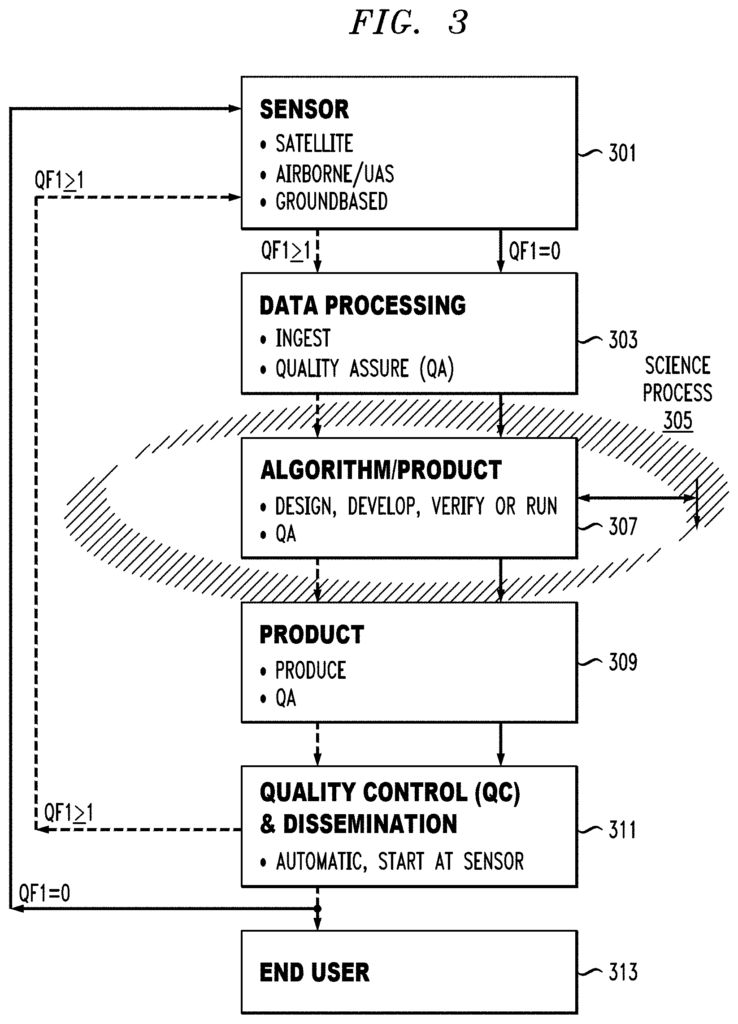
The research and development programs that are aimed at optimizing the current technologies used to manage “treatable” processes can minimize the shortcomings of current weather modification/cloud seeding programmes. Atmospheric processes. DeFelice, T. P. A high-level atmosphere management program plan for a new millennium. J. Weather Modification, 34, 94-99 (2002)(hereinafter ?DeFelice 2002?) and Golden, J. et al. J. Weather Modification 38, 105 – 117 (2006) (hereinafter “Golden and DeFelice, 2006”). The complete disclosures from both are incorporated herein by reference in their entirety for all purposes. However, the skilled artisan is likely to be familiar with them. Most program sponsors do not gain much benefit by using the existing technology, but they incur significant costs. Research and development funding is therefore scarce.
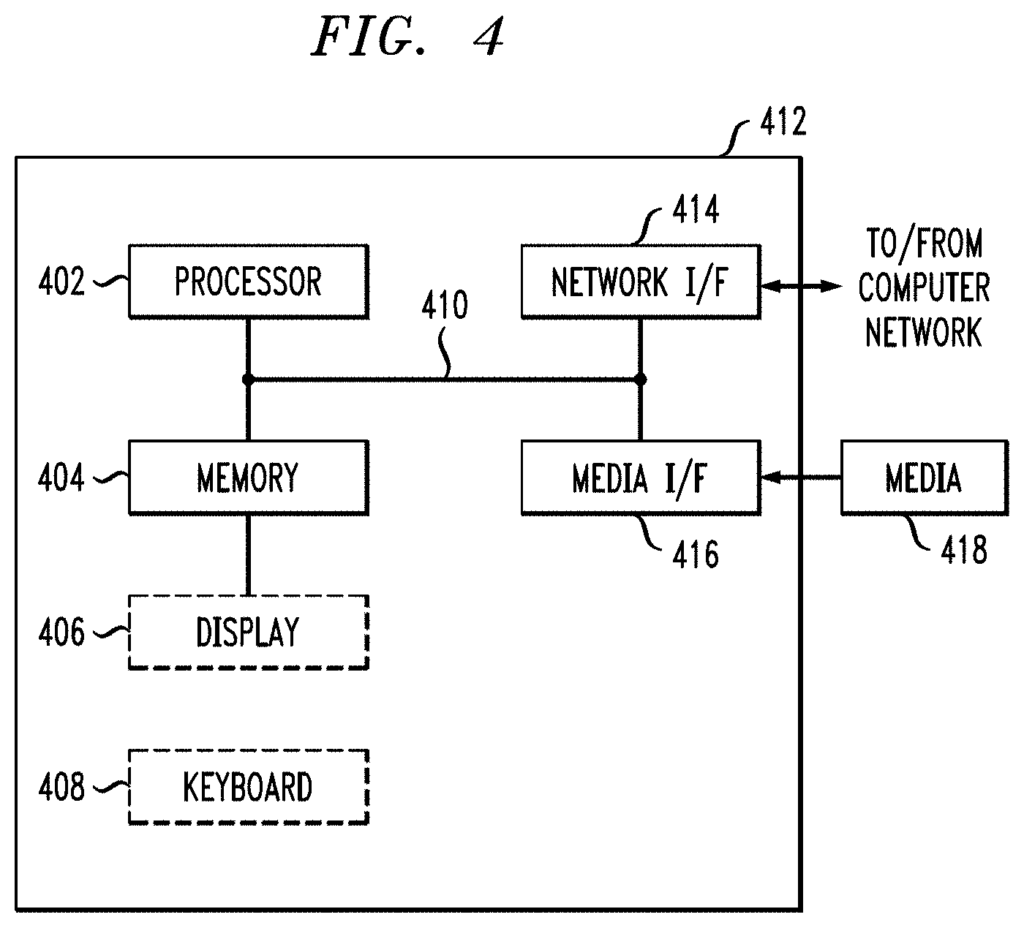
Click here to view the patent on Google Patents.
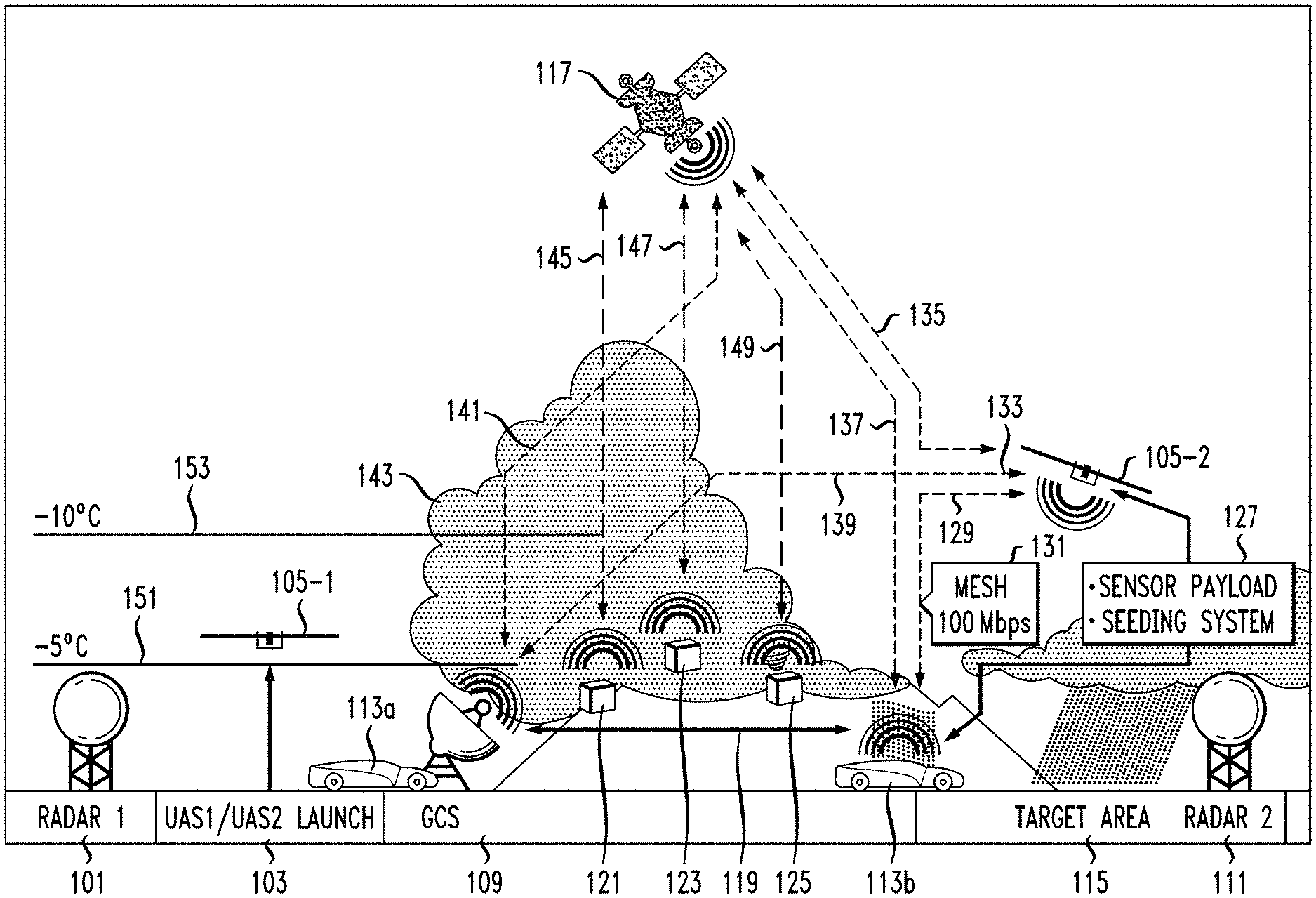
Leave a Reply